It was a special year for the SUSTAvianFEED project. Much of the field activities have started and the partners, for the first time, were able to meet in person at the international Terra Madre Salone del Gusto event in Italy. As the first results come to the surface and the sharing of knowledge and expertise proves progressively more important, the partners are looking forward to 2023, a year full of activities.
The year opened with an additional online meeting. Covid at the beginning of the year had not yet completely abandoned humanity-and even now, in fact, it has not-so it was impossible to usher in the new year with an in-person meeting. This was not a problem: enthusiasm among the partners always proved to be very high and collaboration easy and fruitful, even online. The 3rd project meeting took place on 23rd February: the meeting was mainly focused on Work Package 2 Development of alternative poultry feeds and Work Package 4 Stakeholder interaction and end-user involvement. The final aspects of the WP2 were addressed and the planning of pilot activities was discussed.
Living labs, surveys and interviews

Thereafter, in the first quarter of 2022, SUSTAvianFEED partners identified the possible sustainable diets to be used during the pilot implementation. To validate those diets, a set of Living Lab Activities were conducted. Different workshops and interviews with farmers and experts took place.
Here and here some of the results
At the same time, ENTOMO conducted various interviews with insect producers of each pilot area, with the aim of determining the potential for insect production. The conclusions from the activities were very useful for the development of the deliverables of the project: the interviews with experts and focus groups/workshops with farmers connects with the DLV 2.1, because they participated in the definition of the diets.
The insect selected to carry out the experience will be Hermetia illucens, Black Soldier Fly, for its plasticity and production capacity eating different by-products. It is very adaptable and is present in Europe and in all the Mediterranean area. It has been defined a production methodology, dividing the production into several stages with nursery/hatchery, breeding, fattening, food gathering, pupae preparation and processing.
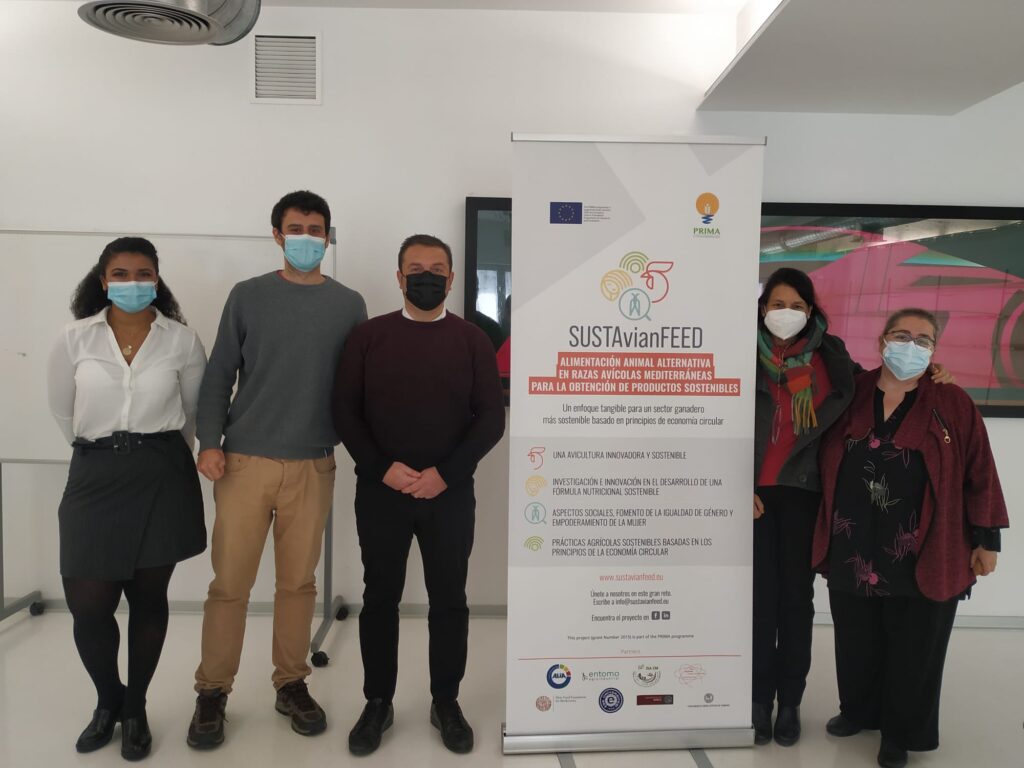
In Tunisia, Rayhana carried out a consumer survey to address attitudes toward sustainable feeding, and understanding and acceptance of the use of insects. In total, 120 responses were collected in a face-to-face survey.
From May to July project partners had internal one-to-one meetings to coordinate the living labs activities and implementation of the pilots for the next months.
In August, Rayhana conducted a LL activity with the aim of assessing the impact of exogenous factors on poultry farming in Jendouba, particularly the war between Ukraine/Russia.
RAYHANA with the supervision of ISA-CM developed a set of 20 interviews with the farmers that will participate in the pilot trial, to determine the baseline, farming habits, and conditions. The results will be the basis to design and adapt the protocols for the experimental trial, as rural women won’t have the same conditions to carry out a scientific approach.
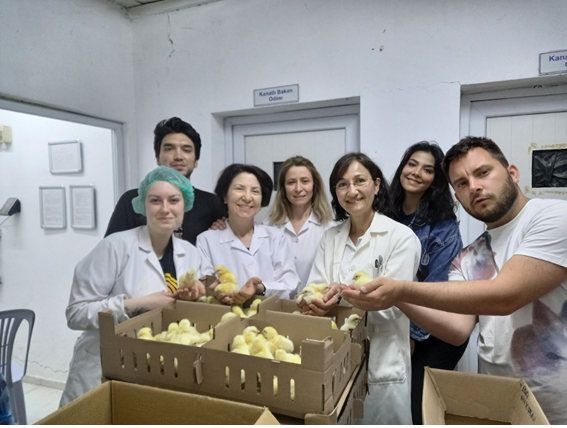
In September, pilot partners participated in the first of a set of workshops related to the Eco-Label. In particular, this living lab activity set the grounds for the interviews with experts and local authorities that are taking place during the last quarter of 2022. At the beginning of 2023, partners will share the results from the perspective of each region.
EGE University (Turkey) and University of Turin (Italy) pilot partners with meat chicken pilots, carried out their experimental trials from May to September 2022, with great preliminary results. EGE also carried out a tasting event of trial samples with six semi trained panelists recruited from the staff and graduate students of the Agriculture Faculty and Food Science Engineering Faculty of EGE University. The main objective of this LL activity was to evaluate the effect of diets on sensory attributes such as appearance, juiciness, flavors, tenderness, and overall liking of the breast meat of chickens.
The rest of the pilot partners will carry out similar events during their pilots.
SUSTAvianFEED starring in international events
In 2022, events played a very important role. In fact, the partners had several opportunities to talk about the project. For example, in April, Prof. Achille Schiavone from the University of Turin (Italy), participated in the NutriForum2022 with an interesting report entitled: Insects in poultry and swine nutrition: ingredient, dietary supplement, or environmental enrichment?
In June, UNITO, UMU, and EGE attended The Mediterranean Poultry Summit (MPS) in Córdoba Spain. In the same month, ALIA attended the National Congress of Agrifood Cooperatives, in Toledo, Spain.
Both events were the opportunity to disseminate materials of the SUSTAvianFEED project. In particular, EGE presented an oral talk entitled “Alternative sustainable broiler feed formulations with local ingredients and black soldier fly larvae: what do stakeholders think in Turkey” in the MPS. This talk/paper was prepared as a summary of online semi-structured interviews conducted as living lab activity to validate the preliminary sustainable diets of SUSTavianFEED project.
In October, ISA-CM team attended the International Agricultural Investment and Technology Exhibition (SIAT 2022), and ALIA and the Universidad de Murcia participated in the 55th edition of the Livestock, Industrial, and Agrifood Fair SEPOR. Both events were the opportunity to disseminate materials and explain the SUSTAvianFEED project to specialized professionals from livestock, industrial and agri-food sectors, and also to consumers who visit the fairs interested in learning about livestock supply chains.
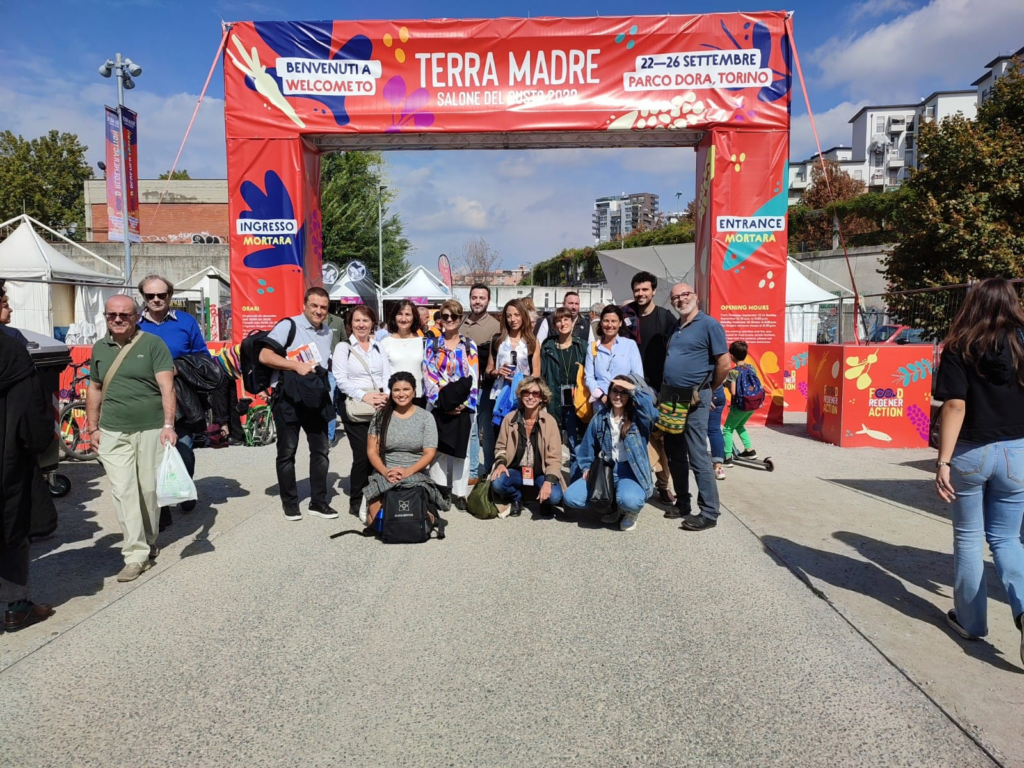
Terra Madre Salone del Gusto 2022: the first meeting in presence
The 4th project meeting took place on the 25th of September 2022, putting the focus on the WP3 SUSTAvianFEED Pilots. This time project partners had the opportunity to share their plan for the experimental trials in the preparation stage, and the preliminary results of the finished ones. Also, the protocols to evaluate the results of the trial were addressed.
The meeting was prepared in the frame of Terra Madre Salone del Gusto 2022 organized by project partner Slow Food. During their visit to the event, project partners have the opportunity to attend the education trail: The Circle of Soil: soil, earthworms, and chickens with a Slow Food Guide.
On the last day, project partners visited the Italian pilot, in the experimental farm of UNITO in Carmagnola, Turin.
First deliverables of the project
By the end of April, the first deliverables of the project were submitted:
D2.1: Sustainable feeding program definition
This deliverable will contain the results of the sustainable feeding program definition to be used in each different pilot area as the basis of pilot’s implementation. This deliverable is related to task 2.1.
First of all, an extensive list of the usual ingredients, and by-products was elaborated in order to be analysed and to start the process of diets elaboration. Each pilot partner developed it for its own region. After the first list of ingredients was developed, it was necessary to determine the nutritional value of the usual ingredients used in each area (Spain, Italy, Turkey and Tunisia), as well as to nutritionally characterize the alternative ingredients or by-products available. After the characterization of the ingredients and the animals’ nutritional requirements were defined, the first proposal of diets was developed per each pilot area.
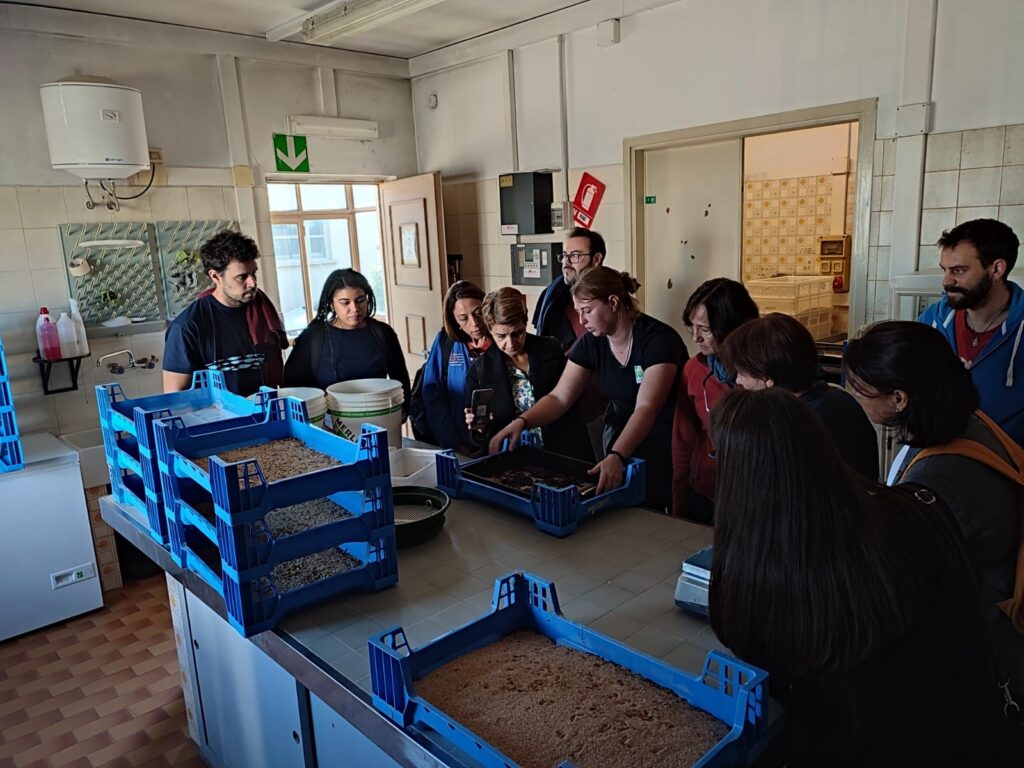
D2.2: Potential for insect production in each pilot area
Detailed report on productivity potential using insect farming in each location, and the proposal of pilot to be constructed. This deliverable is the result of task 2.2.
The insect selected to carry out the experience will be Hermetia illucens, Black Soldier Fly, for its plasticity and production capacity eating different by-products. It is very adaptable, and is present in Europe and in all the Mediterranean area. It has been defined a production methodology, dividing the production into several stages with nursery/hatchery, breeding, fattening, food gathering, pupae preparation and processing. Those processes will be similar in the IPP. Locations’ characteristics have been described based on the information collected from the SUSTAvianFEED partners in terms of production capacity and climate influence. Furthermore, a description of the pilots in each location is given.
The definition of the initial preliminary diets was complemented by several actions in order to define the final sustainable feeding program. In summary, the participatory activities showed that there is room for the sustainability improvement through the elaboration of alternative diets with some limiting factors due to market competitiveness, products availability and legislation issues. There was a big consensus in the fact that the sector needs to increase the whole sustainability and that the diet should be its mainstream. In particular:
D2.3: Feed safety assessment of the alternative diet
This deliverable will contain the results of the health study of the ingredients in feed, which will have been one of the bases for the design of the feeding program for Task 2.1. This deliverable is related with task 2.3.
The sustainable feeding programme has been defined and proposed for the future pilot implementation (Figure 4). However, as already explained, the ingredients, by-products and raw materials availability may modify the original concept. The approach and philosophy would be similar, but some adjustments in the formulas are expected for the actual pilot activity. Therefore, this should be considered as a preliminary sustainable feeding program.
D2.4: Environmental evaluation of the alternative diet
This deliverable will contain the results of the environmental impact study of the ingredients in feed, which will have been one of the bases for the design of the feeding program for Task 2.1. This deliverable is done with task 2.4.
The environmental evaluation of the diet has been important for the definition of the sustainable feeding program. During the process, even though it was clear that soybean and other imported ingredients should be reduced in favour of by-products and local ingredients, lots of possible ingredients were studied in order to have the whole picture. For the environmental evaluation, LCA methodology has been followed and SimaPro 9.2.0.1 has been used.
D2.5: Nutritional and health evaluation of the alternative diet
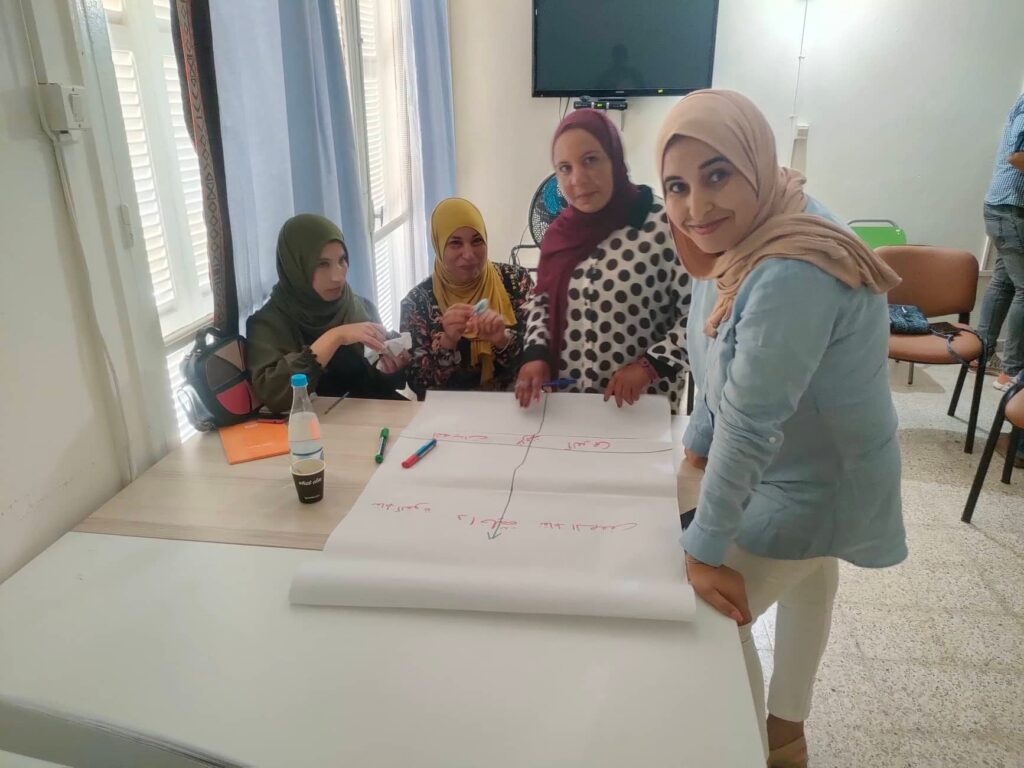
It will contain the results of the nutritional and health evaluation of the diet, which will have been one of the bases for the design of the feeding program for Task 2.1. This deliverable is related with task 2.5.
The nutritional evaluation of the diet was other crucial aspect for the sustainable feeding program definition. For nutritional characterization of usual ingredients of the feed for laying hens or/and meat-type chickens, as well as the possible local ingredients (by-products or other alternatives) that could be used in the manufacture of the experimental feeds, the most relevant bibliography, national and international databases was used to assign the nutritional value of these ingredients. The nutritional value of the ingredients was considered, incorporating the knowledge of ALIA’s nutritionists. This was done in order to assign the nutritional value to the different ingredients proposed by the pilots, so that the programs designed included ingredients that could totally or partially replace the less sustainable ingredients, always considering some limitations to avoid problems in the performance or quality of the productions. The feed safety has been also confirmed by assessing the microbiological status and the potential contaminants (mycotoxins and heavy metals). In the same way, it should be confirmed during pilot project activities. For each ingredient, the regulations, and laws of each country partner of the project have been collected and summarized.
D4.2: Stakeholder interactions along the supply chain
Description of the agri-food supply chain and the stakeholder involvement and main interactions along it. The deliverable is the result of task 4.2.
Until now, we have studied the possibilities of making the process more circular and the need to change the poultry supply chains in more circular ones. It has been analyzed that there are main principles which will make this possible and also some specific ones depending on the location of the activities. Once this has been done, it is time to identify which are the pillars for a sustainable approach as SUSTAvianFEED one, large-scale implementation. In future implementation steps of the project guidelines for Circular Economy Business Models (task 4.3) will be developed as well as an economic analysis of pilot activities (task 3.6). However, after the analysis done in this report, a few aspects have been already identified which will be crucial for real large-scale implementation over the next few years in the society.
And in the future?
The experimental trial of the University of Murcia (Spain) started in October 2022. It is planned to last until February 2023. Project partners will have the occasion to visit the pilot in January 2023, when the 5th project meeting will take place in Murcia, Spain. It will be the opportunity to visit the facilities of ENTOMO in Cehegin and witness the operation of the insect farms plant
There are numerous activities awaiting the partners in 2023, all dedicated to collecting and reworking the initial results of the pilot areas.

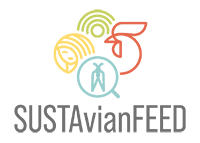





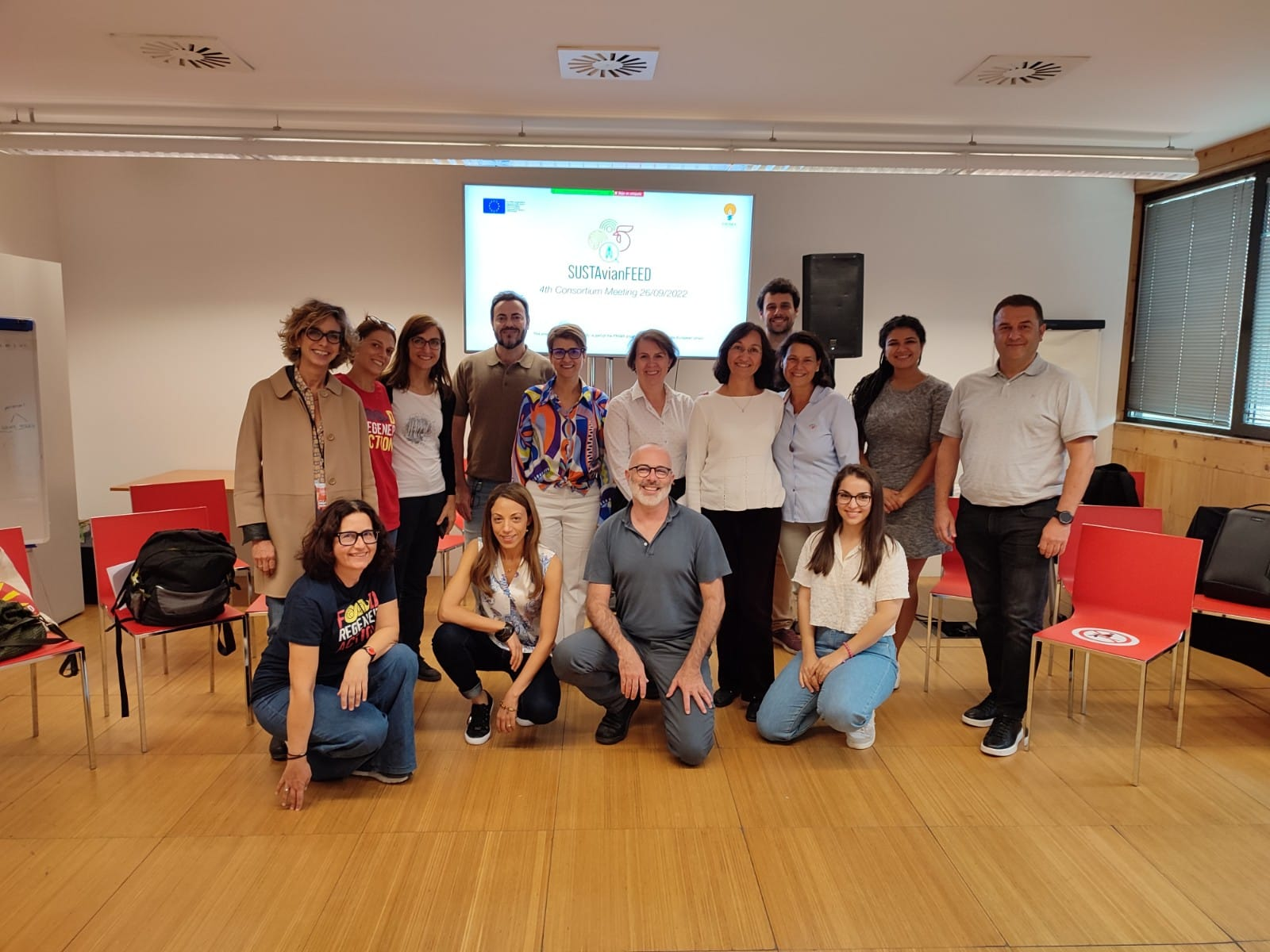
Leave a Reply
You must be logged in to post a comment.